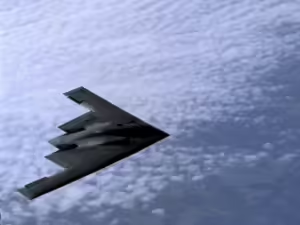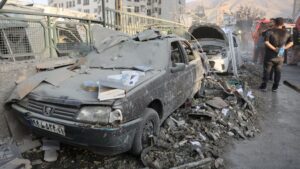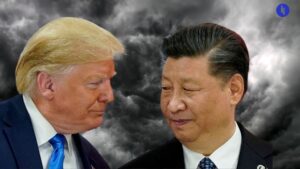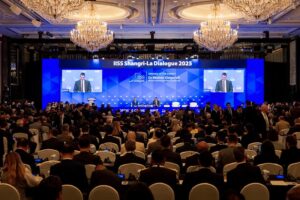Folks in Washington are abuzz right now – here’s why.
On Wednesday, the Chair of the House Intelligence Committee, Mike Turner, surprised everyone with a cryptic call for the White House to declassify information about a “serious national security threat”, so that everyone could “openly discuss the actions necessary to respond to this threat”.
What was this threat? He didn’t say. So everyone in the city went scrambling for the inside word on this “destabilizing foreign military capability”.
Stay on top of your world from inside your inbox.
Subscribe for free today and receive way much more insights.
Trusted by 129,000+ subscribers
No spam. No noise. Unsubscribe any time.
Here are six things we ✌️know✌️ so far:
- The threat is an anti-satellite weapon system being developed by Russia
- It could be nuclear-armed or nuclear-powered
- It’s not designed to attack people or cause physical destruction on Earth
- The White House says the weapon would violate the Outer Space Treaty, which bans nukes and other weapons of mass destruction in space
- The intelligence reportedly says that the US “does not have the ability to counter such a weapon and defend its satellites”, and
- The weapon is not yet in orbit, it’s unclear when that might happen, and it’s not an urgent threat, though there’s a “limited time window” at play.
The world already has ground-based anti-satellite weapons, as well as space-based nuclear reactors. So if we’re talking about a new Russian capability that breaches the Outer Space Treaty, here are two of the most likely theories:
First, it could be a nuclear weapon deployed in space: some outlets are quoting anonymous US officials saying it’s indeed a nuke. But the US tested high-altitude nukes in the 1960s, and ended up not only wiping out satellites on the far side of the planet, but even fried a NASA satellite launched afterwards (due to the lingering radiation).
Even regular weapons cause havoc in space, as Russia learned in 2021 when its destruction of an old satellite caused enough debris to spook the International Space Station (with Russians onboard). So given the risks to Russia itself and its space-faring partners like China or North Korea, a space nuke seems improbable.
Second, it could be a nuclear-powered electronic warfare capability in space, to fry, blind, or jam US satellites. The Outer Space Treaty doesn’t even mention – let alone ban – electronic warfare. But the US could be a) seeking to shoe-horn such a device into the Treaty’s definition of a weapon of mass destruction, or b) claiming such a device breaches the Treaty’s broader principles around the peaceful use of space.
This electronic warfare theory might suggest the US is stretching the Treaty’s commonly understood meaning. But this option would also be less destructive to Russia’s own interests, and it fits what we already know about Russia’s goal to deploy an electronic warfare capability into space by 2025, as well as the progress it’s already made to date (using nuclear reactors).
US officials have apparently known about Russia’s new capability for a year. So then why raise it now? There’s speculation the timing could be linked to:
- Last week’s launch of Russia’s classified Cosmos 2575 satellite
- The ongoing standoff in Congress about whether to keep helping Ukraine defend itself against Russia, and/or
- Another standoff in Congress about whether to renew a US legal authority for intelligence collection – the same legal authority that apparently first brought this new Russian space capability to light.
So for everything we know about this Russian weapon, there’s plenty we don’t.
INTRIGUE’S TAKE
We’ve been accustomed to the US having an overwhelming military and technological advantage over its rivals. So these reports, coming at a moment of US introspection, seem to have hit like a modern-day Sputnik.
But open societies with their raucous media tend to give a vivid portrayal of their own weakness. And closed societies with their state media tend to leave only a generous portrayal of their own strength.
Somehow, this week’s intelligence on Russia seems to have done both.
Also worth noting:
- The Kremlin has dismissed the allegations.
- The US launched six new national security satellites into orbit this week.
- Both the US and Soviet Union experimented with nuclear-tipped anti-satellite weapons during the Cold War.
- In 1978, a Russian nuclear-powered satellite malfunctioned and showered radioactive debris over northern Canada.







